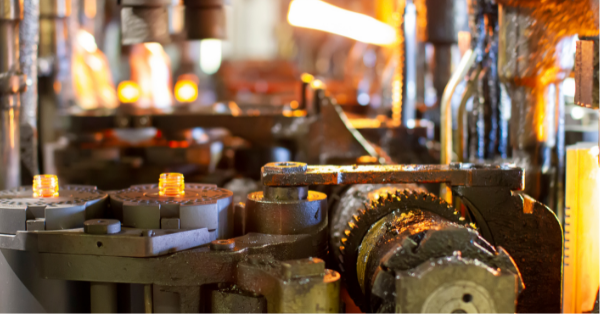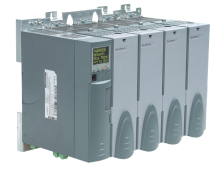Reducing Energy Consumption in Manufacturing
One of the most significant costs for Australian industry is energy and many large users of power are looking for ways to reduce the amount of energy used in manufacturing processes.
Managing harmonics and the power factor within the power system at a manufacturing plant will improve its efficiency and result in significant energy savings.
Managing Power Factor
Power factor is a measure of how effectively electrical power is being used in a system. A low power factor means that there is a lot of energy being wasted, which can result in higher energy bills and reduced efficiency. By managing power factor, electrical systems can operate more efficiently, reducing energy waste and costs.
One method of managing power factor has been to use capacitors to encourage current flow, rather than to impede it.
However, capacitors can be prone to premature failure caused by higher voltages across the dielectric of the capacitor. Therefore, it is better to consider an alternative option, such as a thyristor.
Managing Peak Loads
Another factor to take into consideration is managing peak loads to reduce electricity demand charges.
Power companies charge industry fees for the available demand that they must have readily available to handle peaks in the load, which your manufacturing operations may place on the utility. Even if that peak demand is only present for a matter of minutes.
A simple method of managing peak loads has been to use simple on/off controllers to ensure that the peak demand caused by motors starting up, or heating elements coming on is staggered. However, for some applications, especially those that utilise thermal electrical elements, they fail to maximise the efficiency of the power consumed.
How Eurotherm Thyristors Reduce Energy Usage
Eurotherm thyristors, or silicon-controlled rectifiers (SCRs) have been specifically designed to manage the power within a system, in order to maximise energy efficiency and the productivity of a manufacturing process.
Eurotherm has many years' experience specialising in the control of power systems and ADM Instrument Engineering carries the most common Eurotherm thyristors in stock.
So, how exactly does a Eurotherm thyristor help you improve the efficiency of your power system and reduce your electricity demand charges?
Let’s look at an application example that uses a thermal electric element during an industrial process. Some examples of this type of application are:
- Control of temperature in a furnace
- Production of dehydrated food stuffs (powdered milk, instant coffee, noodle flavourings)
- Concrete lime drying
- Petro-chemical production
- Boost heating in a glass lehr
Unlike simple on / off heating controls, which give you very little control over the power supplied to the element, Eurotherm’s thyristors allow you to carefully control the heating process so that you maximise on energy savings.
CONTROLLED RAMP UP OF CURRENT
A simple on / off controller only has a ‘hard’ switch on. There is no opportunity to manage the peak demands you may have in your power system. The Eurotherm EPack & EPower thyristors allow you to control the ramp up of the current, allowing you to bring it up gradually, controlling the load in the system. This also has the added advantage of increasing the lifetime of the heating element.
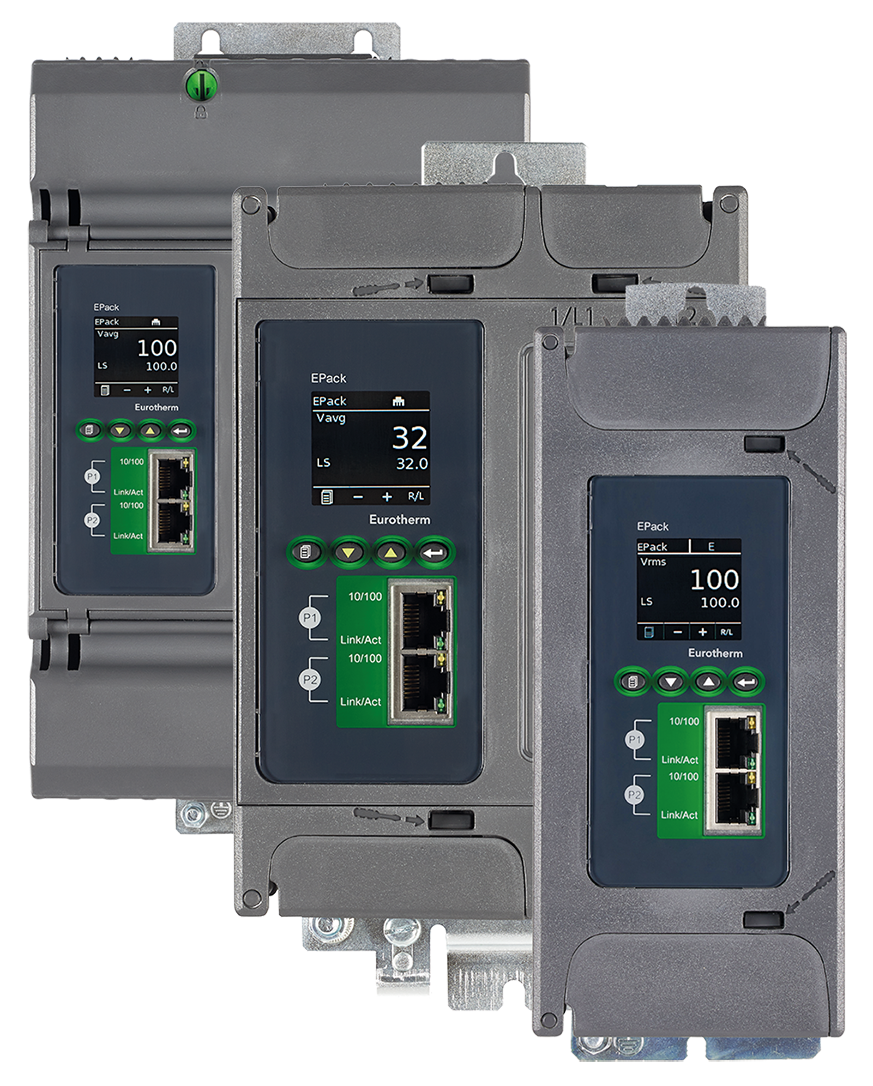
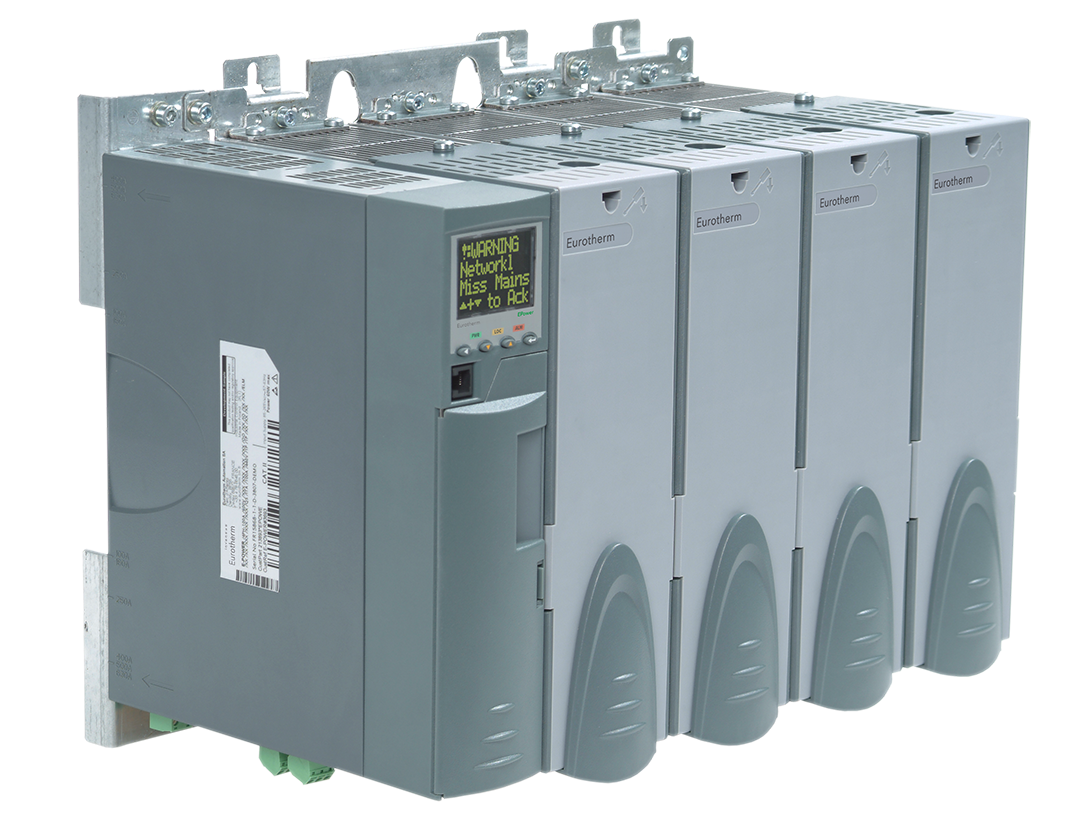
FIRING MODES
Both the EPower and EPack offer you the flexibility of different firing modes:
- Phase angle
- Intelligent half cycle
- Variable modulation burst firing (default 16 cycles)
- Fix modulation period (default 2 seconds)
- Logic mode
With inductive loads, most circuits will have some internal resistance. This causes the current to lag the voltage, adversely affecting the system’s power factor.
A ‘Phase Shift’ is when the voltage and current no longer fall and rise together.
The transformer firing capability of the Eurotherm EPack & EPower thyristors compensate for the phase shift ensuring accurate control of the heating element. It also allows optimal power factor to be maintained, thereby maximising the efficiency of the power system.
LOAD TAP CHANGER
Another useful feature you will find on the Eurotherm EPower is the built-in Load Tap Changer, which saves energy costs by maintaining a power factor as close to zero as possible.
The Load Tap Changer manages the multiple stages of a transformer, switching them on and off to ensure that the inductive output of the thyristor remains between 80 ~ 100%. Thus, maintaining a healthy power factor.
This is particularly useful for when you have no other choice but to use phase angle control.
For example, if you have a single phase set up, powering an electric thermal heating element you may want to initially start off with an output voltage of 240V for the cold start. Once the temperature has started to build, you may want to switch over to a lower voltage tap, say 110V to keep the thyristor’s inductive output between 80~100%. At a later stage in the heating cycle you may need to drop the voltage again. For example, down to 60V to keep the thyristor’s output in the optimum 80~100% output range.
The Load Tap Changer makes this a fairly simple process, enabling you to reduce energy costs by maintaining a power factor as close to zero as possible.
ABILITY TO CALIBRATE CURRENT TO LOAD REQUIRED
Not all thyristors are as advanced as Eurotherm’s product range.
Traditionally, if you had a 40A load you would have needed to select a 50A thyristor. With the Eurotherm EPack & EPower series you can calibrate the current output to the actual load required. Again, this improves the energy efficiency of the manufacturing facility’s power system.
AVOIDANCE OF SET POINT OVERSHOOT
The Eurotherm EPack & EPower thyristors operate as a slave to a PLC, controlling the current supplied to the elements precisely. Thus, achieving the power level requested by the PLC by adjusting the current, voltage, or true power necessary to ensure that the heating element maintains the exact required temperature.
For truly excellent PID control, a PLC would use a Eurotherm controller such as the EPC2000 as a co-processor.
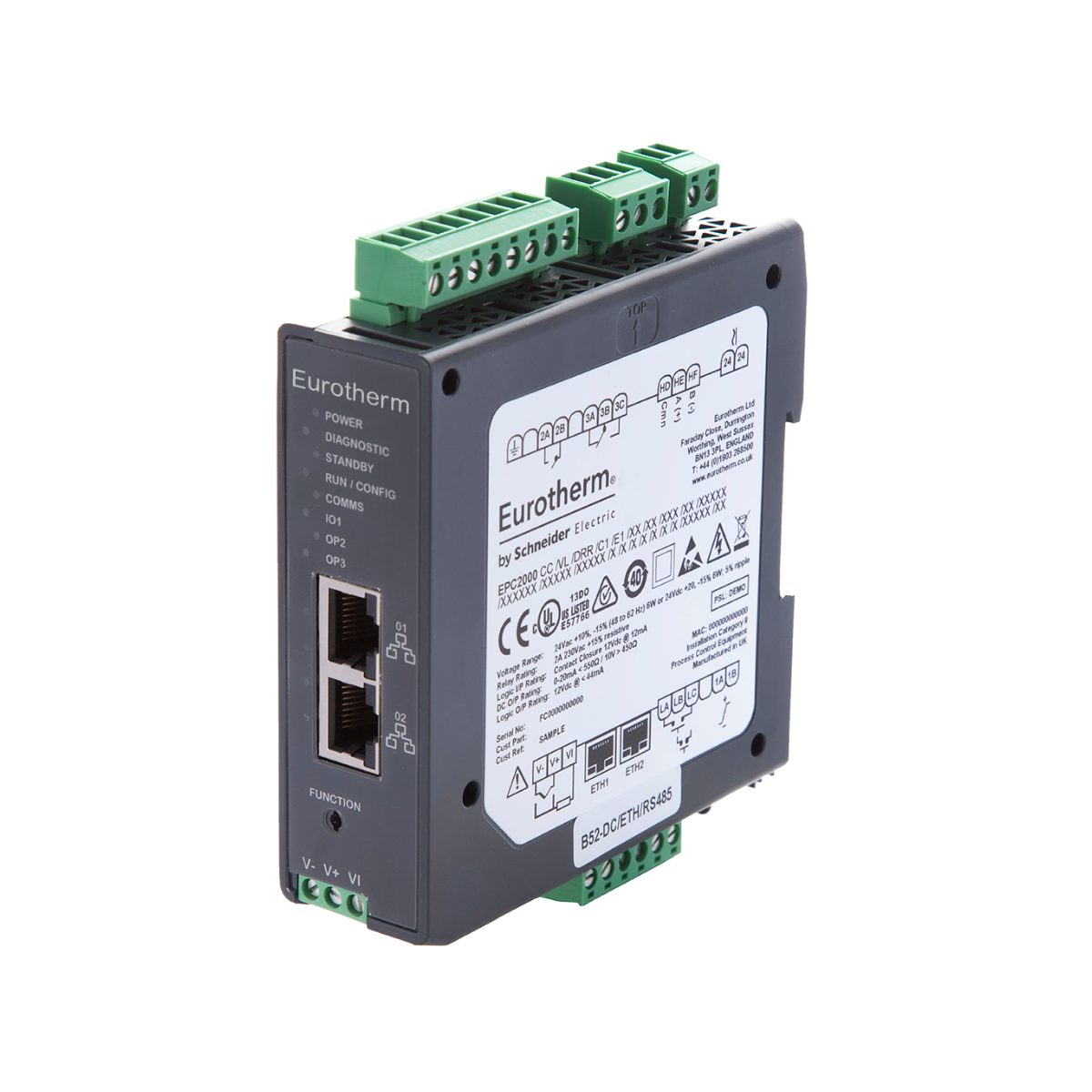
The precision is such that there is virtually no overshoot of the set point. This means energy is not wasted by providing more heat than is required. Another useful side effect is the minimisation of scrappage due to damage caused to materials through overheating.
PREDICTIVE LOAD MANAGEMENT
The Eurotherm EPower series of thyristors incorporate a very useful feature: Predictive Load Management.
This involves two key strategies:
-
Load Balancing
-
Load Shedding
LOAD BALANCING
Load balancing distributes the power of different loads equally to obtain an overall power consumption as stable and balanced as possible.
This eliminates peaks of power, helping to reduce electricity demand charges that you would otherwise have to pay.
Each heating zone controlled by an EPower is defined by an output power, cycle time and a maximum power (max capacity), which can be pictured as a rectangle.
Rather than letting these rectangles pile up randomly, the Predictive Load Management uniformly distributes them. Thereby ensuring that at any given moment the overall power is stable and balanced.
It is important to understand that the PLM function does not change the output power but rather balances and shifts the power evenly, eliminating any disturbance.
The result is optimum load management through intelligent load balancing and load sharing, a strategy that will eliminate peaks and flicker, and even out the overall power usage.
LOAD SHEDDING
The load shedding function allows limiting and shifting the overall energy consumption all together, or with fully adjustable user-defined priorities.
Adjustments can be made through fieldbus communication (Profibus, DeviceNet and Ethernet) enabling dynamic adjustments in view of current ON peak period power surcharges.
Predictive Load Management can also be used to offer operational redundancy using its inherent peer to peer functionality between heating stations.
This is achieved by prioritising the most important heating elements used within your manufacturing process.
For example, on a float glass line the lehr would get preference over heaters on coating lines. The lehr is critical to keep glass flowing during production. If this loses power, there could be significant scrappage.
Cost of Upgrading to Eurotherm Thyristors
Despite the high level of functionality offered by a Eurotherm thyristor, they are surprisingly affordable.
Using Contactors Instead of A Thyristor with Predictive Load Management
There are many manufacturing processes, where it is an absolute necessity to control the load. For example, if you are controlling banks of resistive heaters, which are powered by generators.
Metallic resistive heating elements draw a high current until the metallic element reaches operating temperature. This means the systems power supply needs to be able to handle the initial high inrush current until the heating elements stabilise.
Of course, one way of doing this could be to use a generator that is large enough to cope with the current spikes. The major downside of this solution is the cost.
It is highly likely that there are already generators in place and replacing these is a major capital expenditure.
The most cost-effective method is to use solid controlled rectifier (SCR), otherwise known as a thyristor, such as those as we have already mentioned from Eurotherm.
Contactors can also be used to control the switching of the elements in order to reduce the spike in current, but this option gives you very minimal control.
The Eurotherm EPower thyrsitor gives you access to the advanced features mentioned above, such as predictive load management at a very affordable price.

Using Smart Thyristors to Manage the Power Load in a Gas Emission Simulation
Simulating gas emissions from an exhaust stack requires replicating the temperatures that would usually be present.
This involves controlling multiple heat sources as there is a variation in the temperature along the height of the stack.
ADM has recently supplied a power load management solution for such a project.
The emission simulator included an exhaust stack that had 18 sections, each of which had its own heat source, or heating element.
The delivery of power to the heating elements needs to be carefully controlled, otherwise if they all fire up at the same moment the load on the power supply system would be too great. In the past it may have been necessary to make a substantial investment in increasing the capacity of the power supply.
However, this is no longer necessary thanks to the Eurotherm EPower series thyristors with Predicitve Load Management (PLM).
In this application 18 thyristors were used alongside 18 temperature controllers.
The 18 thyristors were networked, so that they could communicate with each other to ensure that they did not all conduct at the same time.
Eurotherm’s EPower thyristors are well suited to controlling both resisitive and inductive loads.
The built-in Load Tap Changer’ manages the multiple stages of a transformers, switching them on and off to ensure that the inductive output of the thyristor remains between 80 ~ 100%.
This controls harmonic and ensures the power factor of the system is maintained as high as possible, ensuring that the power user is only paying for ‘productive’ power.
If you would like further information on how a Eurotherm thyristor could reduce the energy usage in your industry, then do not hesitate to contact ADM Instrument Engineering.
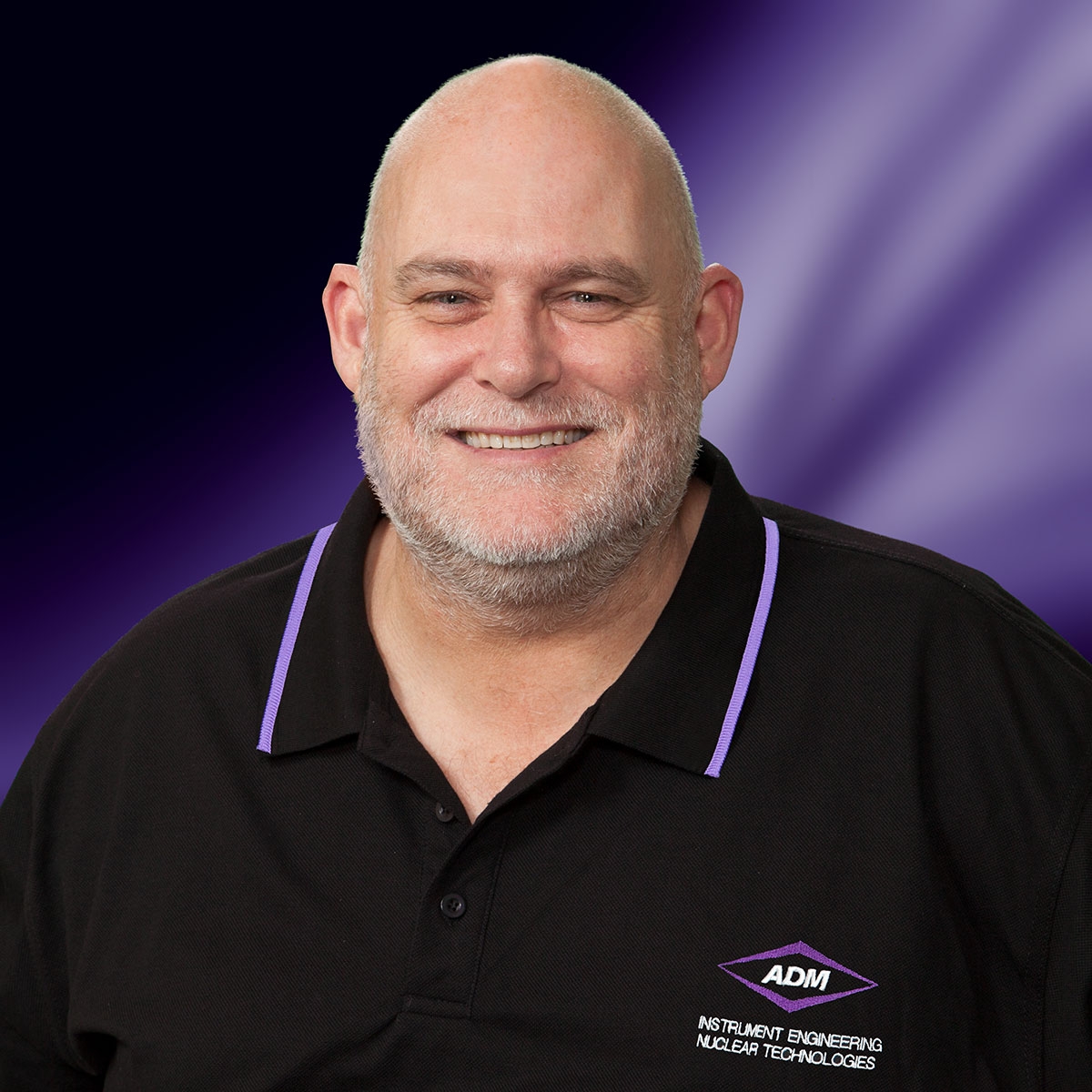
Christopher Lonergan, our Eurotherm Product Leader has more than 30 years' experience working with the Eurotherm product range. He will gladly answer any questions that you may have.
WAS THIS INFORMATION USEFUL?
Why not share it with you industry peers on LinkedIn? Simply click on the blue LinkedIn share icon below.

